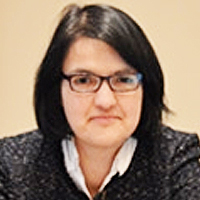Comparative study of continuous method and interrupted method of episiotomy in terms of healing of the surgical wound
Published on: 21st April, 2021
OCLC Number/Unique Identifier: 9023206144
Episiotomy is a most commonly performed minor procedure. There are various type of episiotomy suturing, in this study two most common types of episiotomy suturing techniques were compare in terms of healing rate. This study concluded that the continuous method of episiotomy suturing is although faster, cosmetically better and associated with less post-operative pain but it heals significantly better than interrupted method of suturing.
Eating habits and lifestyle changes during the COVID-19 lockdown: A comparative study (before and during isolation) on the 9 de Julio city (Buenos Aires, Argentina) population
Published on: 16th November, 2020
OCLC Number/Unique Identifier: 8872698108
Following the COVID-19 proliferation beyond China’s borders at the beginning of 2020, containment measures have been taken by different countries around the globe. Citizens were forced to stay at home. Specifically, on March 19th, the Argentine Government decided to implement the “Social, preventive and mandatory isolation”, strategy that unfortunately impacts on the lifestyle, the practise of physical activity and on the nutritional aspect of the population. The aim of this study was analize eating habits and lifestyle changes during the COVID-19 lockdown on the 9 de Julio city, Bs. As., Argentina. The survey was conducted using Google Form. The questionnaire was divided into different sections: sociodemographic data, eating habits, physical activity and concepts and emotions associated with isolation. The research reached 287 responses with a medium socioeconomic level. During isolation, the frequency of purchases decreased. It was observed an increase in the consumption of pasta, bread and cakes. Concerning the physical activity, approximately 70% declared to train before the COVID-19 lockdown, decreased by 13% during the lockdown. Other activities conducted during the COVID-19 lockdown; the most mentioned were cleaning the house, cooking, watching television, series and movies. A percentage greater than 50% of the surveyed population associated the situation of lockdown with positive emotions (share with my family, stay at home); while only 24% associate it with negative emotions (anxiety, anguish, fear). It is expected that most habits will return to normal, however, it would be interesting to know which of those developed, adopted and implemented during lockdown will remain in the new normality.
Synergistic interactions of sperm impairing bacteria: Impact on pregnancy outcome in mouse model
Published on: 9th April, 2021
OCLC Number/Unique Identifier: 9023207277
Earlier in our laboratory, the role of various individual sperm impairing microorganisms on sperm parameters and female infertility has been elucidated at higher doses. As, multiple bacterial species tend to exert more pathogenic effect in comparison to single organism hence, present study was carried out to evaluate that if consortia of these sperm impairing organisms can lead to infertility in female mice at sub fertility dose. For this, impact of individual bacterial strains of Escherichia coli, Pseudomonas aeruginosa, Pseudomonas aeruginosa, Klebsiella pneumoniae and consortia of Escherichia coli and Pseudomonas aeruginosa, Escherichia coli and Pseudomonas aeruginosa, Escherichia coli and Klebsiella pneumoniae was examined on the motility, viability of mouse spermatozoa and fertility outcome. The results showed that the individual bacterial strains of E. coli, S. marcescens and K. pneumoniae could led to immobilization of spermatozoa by agglutination and P. aeruginosa led to immobilization of spermatozoa without agglutination. Also, all of them led to 100% sperm death in 45 min of incubation. In case of consortia of bacterial strains, the results showed sperm agglutination in all the cases and they were able to induce 100% sperm death at 30 min of incubation time. Further, in vivo studies were carried out to evaluate the impact of individual bacterial strains and consortia of bacterial strains on the fertility outcome in female Balb/c mice. For this, female mice were administered intravaginally with 101 cfu/20µl of individual bacterial strains or consortia of strains for 10 consecutive days or PBS. The results showed that both individual bacterial strains and consortia of bacterial strains were able to efficiently colonize the mouse vagina. Further, control group receiving phosphate buffer saline and groups receiving individual bacterial strains showed all the pregnancy related changes viz. abdominal distension, string of pearls on palpation as well as delivery of pups on completion of gestation period and delivery of pups. The histological examination of reproductive organs viz. uterus and ovary, of the female mice receiving PBS or individual bacterial strains showed the formation of corpus luteum in the ovary and the formation of decidua’s in the uterus, indicative of pregnancy. However, mice receiving consortia of bacterial strains did not show any pregnancy related changes throughout the experiment. Thus, these results indicate that the presence of consortia of sperm impairing microorganisms in vaginal milieu is efficient in provoking infertility even at subfertility doses.
Which women uses social Internet networks during pregnancy?
Published on: 31st March, 2021
OCLC Number/Unique Identifier: 9023198153
Internet has become an important part of our life, including during pregnancy where it is broadly used to find information (84%). The aims of this study were (1) to describe the proportion of women using Internet Social Networks (ISN) concerning their pregnancy, during pre or postpartum hospital stay, (2) to define how ISN users refer to their pregnancy and delivery on these social networks, (3) to compare anxiety level, social sustain level, sociodemographic characteristics of the both population (4) and to determine profiles of the ISN users with multiple correspondence analysis.
Methods: 399 questionnaires were distributed in the postpartum wards of two academic hospitals in Paris, and 258 fully filled were retrieved. Tools: Anxiety scale (STAI- A and B), Cutrona Social Provisions Scale, sociodemographic and obstetrical questionnaire.
Results: 76% (n = 195) were ISN users. We compared ISN users versus ISN non users women. Demographically, the two populations were comparable. Anxiety scores were similar in both groups, whereas social support scores showed a statistical difference in social integration.
In the global population, 84% use Internet for information concerning pregnancy; this rate is higher for ISN users than ISN non users (tendency 0.058).
ISN were used in priority for sharing with relatives, and 10% with other pregnant women. Concerning pregnancy, patients posted in priority the birth announcement (28%), the pregnancy announcement (23%), and the newborn’s pictures (12%). 6% posted their fetuses’ ultrasound pictures.
Three clusters of ISN users were extracted with statistically different social support scores (p = 0.019) and comparable anxiety scores. The third one, with at risk profile, used ISN as social support. For all women, but specifically for younger and more socially fragile women, Internet gives to professional new perspectives to develop information and prevention tools during the perinatal period.
Quality Evaluation of Sorghum bicolor Stem Sheath Enriched with Spondias mombin Extract
Published on: 3rd June, 2020
OCLC Number/Unique Identifier: 8628641937
The nutritional compositions of sorghum stem sheath-Spondias mombin extract were evaluated. The enriched stem sheath extract were obtained by mixing sorghum stem sheath and Spondias mombin (iyeye) extract in varied proportions at 100:0; 0:100; 95:5; 90:10 and 85:15. The five samples were subjected to analysis: proximate, mineral, vitamin C, antinutrient composition. Data obtained were analysed using descriptive and inferential statistics. The result showed that observable increases were noticed in proximate, vitamin C and mineral composition from 5% inclusion of Spondias mombin extract in sorghum stem sheath drinks. The anti-nutrient compositions: tannin, oxalate and saponin, ranged from (0.144 to 0.442, 0.303 to 0.385, 0.070 to 0.198) mg/100 ml, respectively for sorghum stem sheath- Spondias mombin extract which were within consumable safe limits. The study concluded that nutritious enriched drinks could be produced from sorghum stem sheath and Spondias mombin extract at ambient temperature.
Laparoscopic staging of borderline ovarian tumours – Technique and results
Published on: 17th March, 2021
OCLC Number/Unique Identifier: 9023197038
Borderline Ovarian Tumors (BOT) tend to present more frequently nowadays, especially in younger women. Furthermore fertility preservation and laparoscopic management is often desired and therefore appropriate counselling is challenging and the treatment selection must be made on evidence based medicine.
Adnexal mass could be a random finding when a typical gynecologic examination is performed. The diagnostic algorithm for possible BOT is the same as for any ovarian tumor, but the treatment options and techniques may vary based on patient’s willing to preserve her fertility or not. Laparoscopic or laparotomy approach has similar results although intraoperative findings and frozen section may redirect the primary treatment planning.
When an initial conservative approach is chosen, a secondary approach including total hysterectomy and bilateral salpingo-oophorectomy with staging should be considered. Hence a full counselling is recommended before any primary approach.
Demystifying the power of magnesium
Published on: 29th May, 2020
OCLC Number/Unique Identifier: 8874832459
Epsom salts was inadvertently discovered in Epson spring in England and used as magnesium salt in 1697. It is simply the magnesium sulphate, a commonly used ingredient in beauty and wellness kiosks for soothing joints, muscles and mind. Richard Martin Willstatter working on plant pigments begged a Nobel Prize in 1915 for his discovery of chlorophyll containing magnesium. The magnesium holds the centre position in chlorophyll in a manner as iron in hemoglobin.
Severe hypertriglycerdemia in pregnancy
Published on: 12th February, 2021
OCLC Number/Unique Identifier: 8932530930
31 year old female presented with abdominal pain and respiratory distress in the third trimester of her second pregnancy. Her blood workup revealed a lipemic sample (Figure 1) due to markedly elevated serum triglycerides of 8178 mg/dl (Glycerol Phosphate Oxidase method). Total cholesterol and Low Density Lipoprotein were elevated at 1701 mg/dl and 788 mg/dl respectively. There was no family history of lipid disorders. Diagnosis was consistent with gestational hypertriglyceridemia with acute pancreatitis (Serum Amylase-50 U/L, Serum Lipase- 96 U/L), though genetic tests to rule out pre-existing primary hypertriglyceridemia was not feasible. In view of the life threatening condition, she was initiated on Insulin-Dextrose infusion and offered one session of Plasma Exchange. Figures 2,3 depict membrane plasma separation with the obtained effluent as lipemic plasma. Her serum triglycerides showed a declining trend and was discharged in good health (serum triglycerides at discharge-651 mg/dl).
Bioactive components of tea
Published on: 10th March, 2020
OCLC Number/Unique Identifier: 8558605706
Tea (Black tea and Green tea) are one of the most widely consumed beverages in the world. However, with the increasing interest in the health properties of tea and a significant rise in scientific investigation, this review covers some of the recent findings on the health benefits of both green and black tea. The mechanisms of action of various black and green tea components have been presented. Green tea contains a unique set of catechins that responsible for its biological activity potentially relevant to the prevention of diseases. Although there has been much focus on the biological property of the major tea catechins, black tea offers major health benefits either due to the presence of the catechins in epimerized form or some other active components of both varieties of tea. Characteristics unrelated to the antioxidant properties of green and black tea might also be responsible for their therapeutic potential in preventing diseases. Synergistic effect of the tea constituents is increasingly recognized as being potentially important to the medicinal benefits of black and green tea. The studies indicate that tea has the potential of being a part of diet for healthy living.
Epidemiologic aspects and risk factors associated with infertility in women undergoing assisted reproductive technology (ART) in north of Iran
Published on: 20th January, 2021
OCLC Number/Unique Identifier: 8897953759
Objective: This study aimed to investigating of the epidemiological aspects of infertility and related risk factors in infertile women.
Materials and methods: This cross-sectional study, carried out on 330 infertile women referred to two infertility treatment center of Imam Khomeini Hospital and Mother center in Sari, Iran, from April 2015 to March 2017.
Results: 54.5% of these women were in the age of 30-39 years, infertility duration in 55.2% was 1-5 years, Body mass index (BMI) in 44.5% of samples was 26-30 kg/m2, 54.5% had diploma and associate degree. 63.6% lived in urban areas. 74.5 % of patients reported primary infertility. History of polycystic ovarian syndrome (PCOs) and pelvic inflammatory disease (PID) and poor ovarian reserve were the most common causes and risk factors for the infertility with prevalence 19.42%, 16.81% and 13.91%, respectively. Most underlying disease was thyroid disorders (54.5%). There was found statistically significant relationship between residents of urban areas and infertility duration, endometriosis and educational levels, miscarriage with thyroid. Data analysis performed using IBM SPSS 21 software and Chi-Square test (p < 0.05).
Conclusion: The results showed that women with infertility in north of Iran were more likely to be older, less educated, and also had overweight. They are more possible to have ovarian disorders. In these area, thyroid disease more common like Iodine deficient regions. Future research should be focused on the reasons why majority of women don’t seek treatment for the underline significant diseases that may be effects on ovarian function and fertility.




